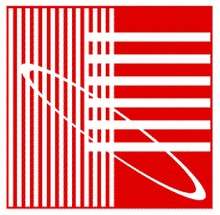International Building Performance Simulation Association
The International Building Performance Simulation Association (IBPSA), is a non-profit international society of building performance simulation researchers, developers and practitioners, dedicated to improving the built environment.[3] IBPSA aims to provide a forum for researchers, developers and practitioners to review building model developments, encourage the use of software programs, address standardization, accelerate integration and technology transfer, via exchange of knowledge and organization of (inter)national conferences.[4]
 | |
| Abbreviation | IBPSA |
|---|---|
| Formation | January 1987 [1] |
| Type | Non-profit |
Membership | 4,700 [2] |
| Website | www |
Organization
IBPSA is an international organization with regional affiliate organizations around the world. IBPSA is governed by a board of directors elected by the membership of all the regional affiliates. In addition to the president, vice-president, secretary, and treasurer, the board is made up of members-at-large and representatives sent by the regional affiliates.
Publications
Newsletter
ibpsaNEWS, IBPSA's online newsletter is published twice per year. The current edition and past issues are available at the IBPSA website.
Conference proceedings
IBPSA is organizer of the bi-annual international IBPSA Building Simulation Conference and Exhibition. Building Simulation is the premier international event in the field of building performance simulation. In addition to the international conferences, some regional affiliates organize local conferences, as well. All papers presented in the proceedings of these conferences are available at IBPSA's website.
Journal
The Journal of Building Performance Simulation (JBPS) is the official peer-reviewed scientific journal of the International Building Performance Simulation Association. JBPS publishes articles of the highest quality that are original, cutting-edge, well-researched and of significance to the international community. The journal also offers a forum for original review papers and researched case studies.[5] JBPS is published by Taylor & Francis Group, and co-edited by dr. Jan Hensen (Eindhoven University of Technology) and dr. Ian Beausoleil-Morrison (Carleton University).
Regional affiliates
Membership of IBPSA is organized through regional affiliates. These affiliates plan and coordinate different types of activities, such as conferences, software workshops, symposia, etc. There are currently 28 regional IBPSA affiliates, spanning 5 continents: Argentina, Australasia, Brazil, Canada, China, Chile, Czech Republic, Danube, Egypt, England, France, Germany, India, Ireland, Italy, Japan, Korea, Netherlands + Flanders, Nordic, Poland, Scotland, Singapore, Slovakia, Spain, Switzerland, Turkey, United Arab Emirates and USA.
Support for building performance simulation users
IBPSA has partnered with ASHRAE and IESNA to develop the Building Energy Modeling Professional Certification scheme.[8] In addition, IBPSA is supporter of mailing lists[9] and question-and-answer websites[10] that stimulation knowledge exchange and discussion among users of building performance simulation in research and practice.
Awards
Recipients of the IBPSA Distinguished Achievement Award:
- 1991 Gint Mitalas (Canada)
- 1993 Tamami (Tom) Kusuda (USA)
- 1995 George Walton (USA)
- 1997 Jean Le Brun (Belgium)
- 1999 Joe Clarke (U.K.)
- 2001 Ed Sowell (USA)
- 2003 Curt Pedersen (USA)
- 2005 Fred Winkelmann (USA)
- 2007 Yi Jiang (China)
- 2009 Terence J Williamson (Australia)
- 2011 Tom Maver (U.K.)
- 2013 Qingyan Chen (USA)[11]
- 2015 Godfried Augenbroe (USA)
- 2017 Ardeshir Mahdavi (Austria)[12]
See also
References
- IBPSA News Volume 1, Number 1
- "IBPSA Welcomes a new Regional Affiliate --IBPSA-Argentina, Bldg-sim, 13 June 2013". Archived from the original on 16 November 2014. Retrieved 16 November 2014.
- Hensen, J.L.M.; Lamberts, R. (2011). Building performance simulation for design and operation. Spon press. p. xxii. ISBN 978-0-415-47414-6.
- Anderson, Kjell (2014). Design Energy Simulation for Graphics: Guide to 3D Graphics. Routledge. p. 243. ISBN 978-1317915683.
- JBPS Aims and Scope
- Jan Hensen and Roberto Lamberts (Editors) (2011). Building Performance Simulation for Design and Operation. London and New York: Spon Press. ISBN 978-0-415-47414-6.CS1 maint: extra text: authors list (link)
- de Wilde, Pieter (2018). Building Performance Analysis. Chichester / Hoboken: Wiley. ISBN 978-1-119-34192-5.
- "ASHRAE Certification: Building Energy Modeling Professional". Building Energy Quotient. Retrieved 16 November 2014.
- "Bldg-sim -- Users of building energy simulation tools".
- "Unmet Hours - Question-and-Answer Resource for the Building Energy Modeling Community".
- "Qingyan Chen receives IBPSA Distinguished Service Award". Mechanical Engineering - Purdue University. Retrieved 2019-12-31.
- "Awards | IBPSA". Retrieved 2019-08-19.